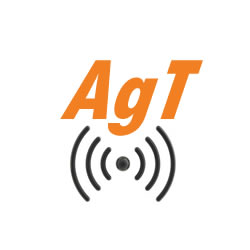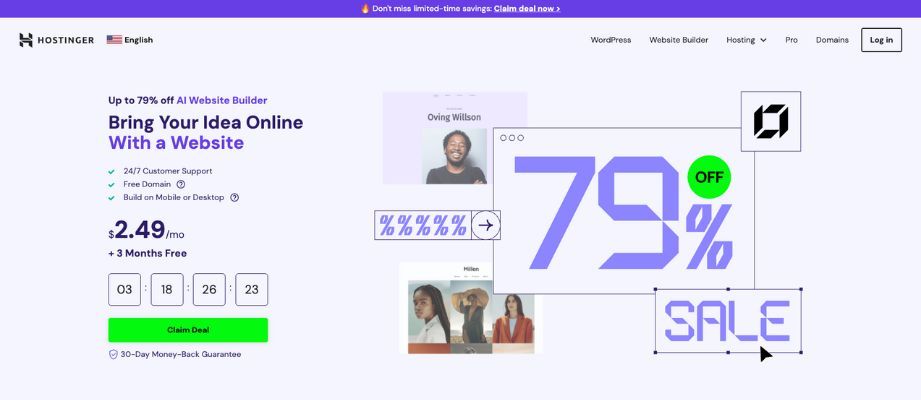data is often different from regular analysis, mainly because of challenges regarding the time-dependency that every data scientist eventually runs into.
What if you could speed up and improve your analysis with just the right prompt?
Large Language Models (LLMs) are already a game-changer for time-series analysis. If you combine LLMs with smart prompt engineering, they can open doors to methods most analysts haven’t tried yet.
They are great at spotting patterns, detecting anomalies, and making forecasts.
This guide puts together proven strategies that go from simple data preparation all the way to advanced model validation. By the end, you’ll have practical tools that put you a step ahead.
Everything here is backed by research and real-world examples, so you’ll walk away with practical tools, not just theory!
This is the first article in a two-part series exploring how prompt engineering can boost your time-series analysis:
- Part 1: Prompts for Core Strategies in Time-Series (this article)
- Part 2: Prompts for Advanced Model Development
👉 All the prompts in this article are available at the end of this article as a cheat sheet 😉
In this article:
- Core Prompt Engineering Strategies for Time-Series
- Prompts for Time-Series Preprocessing and Analysis
- Anomaly Detection with LLMs
- Feature Engineering for Time-Dependent Data
- Prompt Engineering cheat sheet!
1. Core Prompt Engineering Strategies for Time-Series
1.1 Patch-Based Prompting for Forecasting
Patch Instruct Framework
A good trick is to break a time series into overlapping “patches” and feed those patches to an LLM using structured prompts. This approach called PatchInstruct is very effective and it keeps accuracy about the same.
Example Implementation:
## System
You are a time-series forecasting expert in meteorology and sequential modeling.
Input: overlapping patches of size 3, reverse chronological (most recent first).
## User
Patches:
- Patch 1: [8.35, 8.36, 8.32]
- Patch 2: [8.45, 8.35, 8.25]
- Patch 3: [8.55, 8.45, 8.40]
...
- Patch N: [7.85, 7.95, 8.05]
## Task
1. Forecast next 3 values.
2. In ≤40 words, explain recent trend.
## Constraints
- Output: Markdown list, 2 decimals.
- Ensure predictions align with observed trend.
## Example
- Input: [5.0, 5.1, 5.2] → Output: [5.3, 5.4, 5.5].
## Evaluation Hook
Add: "Confidence: X/10. Assumptions: [...]".
Why it works:
- The LLM will notice short-term temporal patterns in the data.
- Uses fewer tokens than raw data dumps (so, less cost).
- Keeps things interpretable because you can rebuild the patches later.
1.2 Zero-Shot Prompting with Contextual Instructions
Let’s imagine you need a quick baseline forecast.
Zero-shot prompting with context works for this. You just give the model a clear description of the dataset, frequency, and forecast horizon, and it can identify patterns without any extra training!
## System
You are a time-series analysis expert specializing in [domain].
Your task is to identify patterns, trends, and seasonality to forecast accurately.
## User
Analyze this time series: [x1, x2, ..., x96]
- Dataset: [Weather/Traffic/Sales/etc.]
- Frequency: [Daily/Hourly/etc.]
- Features: [List features]
- Horizon: [Number] periods ahead
## Task
1. Forecast [Number] periods ahead.
2. Note key seasonal or trend patterns.
## Constraints
- Output: Markdown list of predictions (2 decimals).
- Add ≤40-word explanation of drivers.
## Evaluation Hook
End with: "Confidence: X/10. Assumptions: [...]".
1.3 Neighbor-Augmented Prompting
Sometimes, one time series isn’t enough. we can add “neighbor” series that are similar and then the LLM is able spot common structures and improve predictions:
## System
You are a time-series analyst with access to 5 similar historical series.
Use these neighbors to identify shared patterns and refine predictions.
## User
Target series: [current time series data]
Neighbors:
- Series 1: [ ... ]
- Series 2: [ ... ]
...
## Task
1. Predict the next [h] values of the target.
2. Explain in ≤40 words how neighbors influenced the forecast.
## Constraints
- Output: Markdown list of [h] predictions (2 decimals).
- Highlight any divergences from neighbors.
## Evaluation Hook
End with: "Confidence: X/10. Assumptions: [...]".
2. Prompts for Time-Series Preprocessing and Analysis
2.1 Stationarity Testing and Transformation
One of the first things data scientists must do before modeling time-series data is to check whether the series is stationary.
If it’s not, they need to apply transformations like differencing, log, or Box-Cox.
Prompt to Test for Stationary and Apply Transformations
## System
You are a time-series analyst.
## User
Dataset: [N] observations
- Time period: [specify]
- Frequency: [specify]
- Suspected trend: [linear / non-linear / seasonal]
- Business context: [domain]
## Task
1. Explain how to test for stationarity using:
- Augmented Dickey-Fuller
- KPSS
- Visual inspection
2. If non-stationary, suggest transformations: differencing, log, Box-Cox.
3. Provide Python code (statsmodels + pandas).
## Constraints
- Keep explanation ≤120 words.
- Code should be copy-paste ready.
## Evaluation Hook
End with: "Confidence: X/10. Assumptions: [...]".
2.2 Autocorrelation and Lag Feature Analysis
Autocorrelation in time series measures how strongly current values are correlated with their own past values at different lags.
With the right plots (ACF/PACF), you can observe lags that matter most and build features around them.
Prompt for Autocorrelation
## System
You are a time-series expert.
## User
Dataset: [brief description]
- Length: [N] observations
- Frequency: [daily/hourly/etc.]
- Raw sample: [first 20–30 values]
## Task
1. Provide Python code to generate ACF & PACF plots.
2. Explain how to interpret:
- AR lags
- MA components
- Seasonal patterns
3. Recommend lag features based on significant lags.
4. Show Python code to engineer these lags (handle missing values).
## Constraints
- Output: ≤150 words explanation + Python snippets.
- Use statsmodels + pandas.
## Evaluation Hook
End with: "Confidence: X/10. Key lags flagged: [list]".
2.3 Seasonal Decomposition and Trend Analysis
Decomposition helps you see the story behind the data and it helps seeing it in different layers: trend, seasonality, and residuals.
Prompt for Seasonal Decomposition
## System
You are a time-series expert.
## User
Data: [time series]
- Suspected seasonality: [daily/weekly/yearly]
- Business context: [domain]
## Task
1. Apply STL decomposition.
2. Compute:
- Seasonal strength Qs = 1 - Var(Residual)/Var(Seasonal+Residual)
- Trend strength Qt = 1 - Var(Residual)/Var(Trend+Residual)
3. Interpret trend & seasonality for business insights.
4. Recommend modeling approaches.
5. Provide Python code for visualization.
## Constraints
- Keep explanation ≤150 words.
- Code should use statsmodels + matplotlib.
## Evaluation Hook
End with: "Confidence: X/10. Key business implications: [...]".
3. Anomaly Detection with LLMs
3.1 Direct Prompting for Anomaly Detection
Anomaly detection in time-series is usually not a fun task and requires a lot of time.
LLMs can act like a vigilant analyst, spotting outsider values in your data.
Prompt for Anomaly Detection
## System
You are a senior data scientist specializing in time-series anomaly detection.
## User
Context:
- Domain: [Financial/IoT/Healthcare/etc.]
- Normal operating range: [specify if known]
- Time period: [specify]
- Sampling frequency: [specify]
- Data: [time series values]
## Task
1. Detect anomalies with timestamps/indices.
2. Classify as:
- Point anomalies
- Contextual anomalies
- Collective anomalies
3. Assign confidence scores (1–10).
4. Explain reasoning for each detection.
5. Suggest potential causes (domain-specific).
## Constraints
- Output: Markdown table (columns: Index, Type, Confidence, Explanation, Possible Cause).
- Keep narrative ≤150 words.
## Evaluation Hook
End with: "Overall confidence: X/10. Further data needed: [...]".
3.2 Forecasting-Based Anomaly Detection
Instead of looking at anomalies directly, another smart strategy is to forecast what “should” happen first, and then measure where reality drifts away from those expectations.
Those deviations can highlight anomalies that wouldn’t stand out in another way.
Here’s a ready-to-use prompt you can try:
## System
You are an expert in forecasting-based anomaly detection.
## User
- Historical data: [time series]
- Forecast horizon: [N periods]
## Method
1. Forecast the next [N] periods.
2. Compare actual vs forecasted values.
3. Compute residuals (errors).
4. Flag anomalies where |actual - forecast| > threshold.
5. Use z-score & IQR methods to set thresholds.
## Task
Provide:
- Forecasted values
- 95% prediction intervals
- Anomaly flags with severity levels
- Recommended threshold values
## Constraints
- Output: Markdown table (columns: Period, Forecast, Interval, Actual, Residual, Anomaly Flag, Severity).
- Keep explanation ≤120 words.
## Evaluation Hook
End with: "Confidence: X/10. Threshold method used: [z-score/IQR]".
4. Feature Engineering for Time-Dependent Data
Smart features can make or break your model.
There are just too many options: lags to rolling windows, cyclical features, and external variable. There’s a lot you can add to capture time dependencies.
4.1 Automated Feature Creation
The real magic happens once you engineer meaningful features that capture trends, seasonality, and temporal dynamics. LLMs can actually help automate this process by generating a wide range of useful features for you.
Comprehensive Feature Engineering Prompt:
## System
You are a feature engineering expert for time series.
## User
Dataset: Part 1: Prompts for Core Strategies in Time-Series
The post Prompt Engineering for Time-Series Analysis with Large Language Models appeared first on Towards Data Science.
- Target variable: [specify]
- Temporal granularity: [hourly/daily/etc.]
- Business domain: [context]
## Task
Create temporal features across 5 categories:
1. **Lag Features**
- Simple lags, seasonal lags, cross-variable lags
2. **Rolling Window Features**
- Moving averages, std/min/max, quantiles
3. **Time-based Features**
- Hour, day, month, quarter, year, DOW, WOY, is_weekend, is_holiday, time since events
4. **Seasonal & Cyclical Features**
- Fourier terms, sine/cosine transforms, interactions
5. **Change-based Features**
- Differences, pct changes, volatility measures
## Constraints
- Output: Python code using pandas/numpy.
- Add short guidance on feature selection (importance/collinearity).
## Evaluation Hook
End with: "Confidence: X/10. Features most impactful for [domain]: [...]".
4.2 External Variable Integration
It can happen that the target series is not enough to explain the full story.
There are external factors that often influence our data, like weather, economic indicators, or special events. They can add context and improve forecasts.
The trick is knowing how to integrate them properly without breaking temporal rules. Here’s a prompt to incorporate exogenous variables into your analysis.
Exogenous Variable Prompt:
## System
You are a time-series modeling expert.
Task: Integrate external variables (exogenous features) into a forecasting pipeline.
## User
Primary series: [target variable]
External variables: [list]
Data availability: [past only / future known / mixed]
## Task
1. Assess variable relevance (correlation, cross-correlation).
2. Align frequencies and handle resampling.
3. Create interaction features between external & target.
4. Apply time-aware cross-validation.
5. Select features suited for time-series models.
6. Handle missing values in external variables.
## Constraints
- Output: Python code for
- Data alignment & resampling
- Cross-correlation analysis
- Feature engineering with external vars
- Model integration:
- ARIMA (with exogenous vars)
- Prophet (with regressors)
- ML models (with external features)
## Evaluation Hook
End with: "Confidence: X/10. Most impactful external variables: [...]".
Final Thoughts
I hope this guide has given you a lot to digest and try.
It’s a toolbox full of researched techniques for using LLMs in time-series analysis.
Success in time-series data comes when we respect the quirks of temporal data, craft prompts that highlight those quirks, and validate everything with the right evaluation methods.
Thank you for reading! Stay tuned for Part 2 😉
👉 Get the full prompt cheat sheet in Sara’s AI Automation Digest — helping tech professionals automate real work with AI, every week. You’ll also get access to an AI tool library.
I offer mentorship on career growth and transition here.
If you want to support my work, you can buy me my favorite coffee: a cappuccino. 😊
References
LLMs for Predictive Analytics and Time-Series Forecasting
Smarter Time Series Predictions With Less Effort
Forecasting Time Series with LLMs via Patch-Based Prompting and Decomposition
LLMs in Time-Series: Transforming Data Analysis in AI
kdd.org/exploration_files/p109-Time_Series_Forecasting_with_LLMs.pdf













